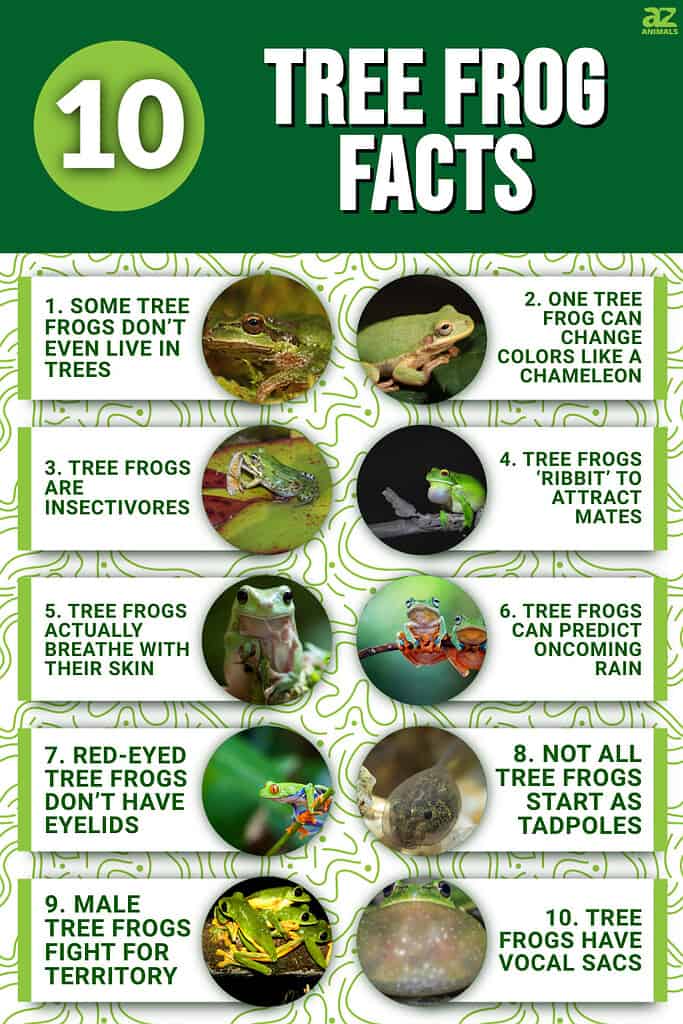
There are over 800 species of tree frogs living all over the world. They can be found on every continent except Antarctica. Despite their name, not all tree frogs actually live in trees. In fact, the thing that separates tree frogs from other frogs is actually a claw-like bone in their toes that other frogs lack. Tree frogs are closely related to other kinds of amphibians like toads, salamanders, and newts.
Let’s learn 10 incredible facts about tree frogs!
1. Some Tree Frogs Don’t Even Live in Trees

Pacific tree frogs spend most of their lives on the forest floor.
©Oakland Images/Shutterstock.com
Most species of tree frogs are arboreal (tree-living), but a few are more terrestrial (ground-living). Further, many species of arboreal tree frogs spend time on the ground when it’s time to lay their eggs.
Pacific tree frogs (Pseudacris regilla) spend most of their lives on the forest floor. They’re native to the Pacific Coast of North America and are particularly common in Washington State. They may be terrestrial, but these tree frogs still enjoy a good pond, lake, or wetland.
2. One Tree Frog Can Change Colors Like a Chameleon

Squirrel tree frogs can change color for optimum camouflage.
Image: Steve Bower, Shutterstock
©Steve Bower/Shutterstock.com
The squirrel tree frog (Hyla squirella) has the ability to change the color of its skin. But, this isn’t the only tree frog that can change its color. Gray tree frogs (Hyla versicolor) actually get their Latin name from their chameleon-like abilities. These frogs grow darker during the day and lighter at night.
Most species of tree frogs have camouflaging coloration. This helps them hide from predators, like larger frogs, toads, hawks, lizards, snakes, and weasels. Humans have even been known to eat tree frogs, despite their tiny size. Species like the green tree frog range in color from brown to green, depending on where they live.
3. Tree Frogs are Insectivores
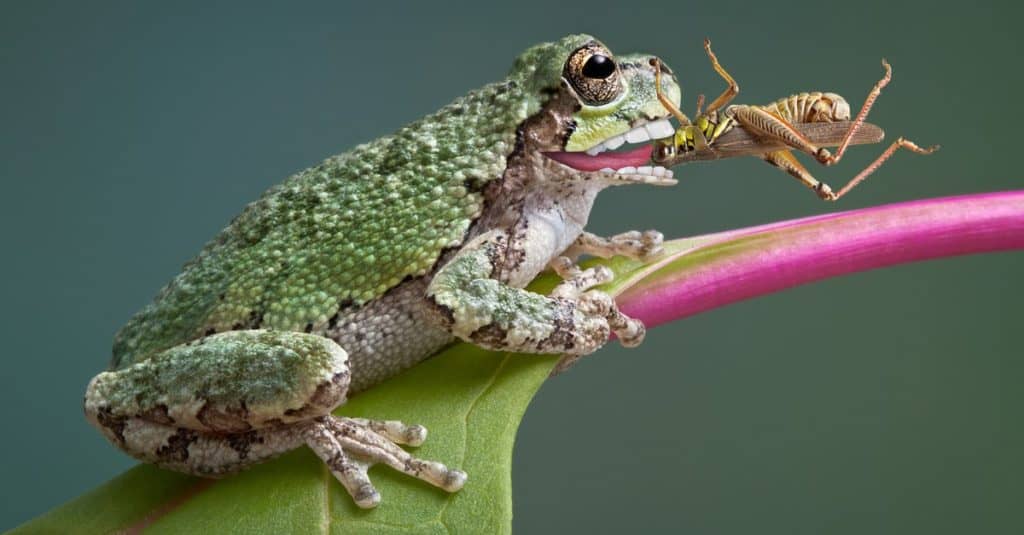
The size of a tree frog’s prey is dependent on how big the tree frog is.
©Cathy Keifer/Shutterstock.com
Tree frogs are carnivores who spend most of their time hunting. They eat flies, worms, crickets, spiders, snails, slugs, and smaller frogs. But, like most amphibians, there’s not much a tree frog won’t eat. If it fits in the frog’s mouth, it’s fair game.
Because of their undemanding diet and small size, tree frogs make popular pets. The most common pet species of tree frog is the green tree frog. Pet tree frogs eat mostly crickets, mealworms, and earthworms. They live in humid terrariums and should be given plenty of fresh water and clean substrate.
4. Tree Frogs ‘Ribbit’ to Attract Mates
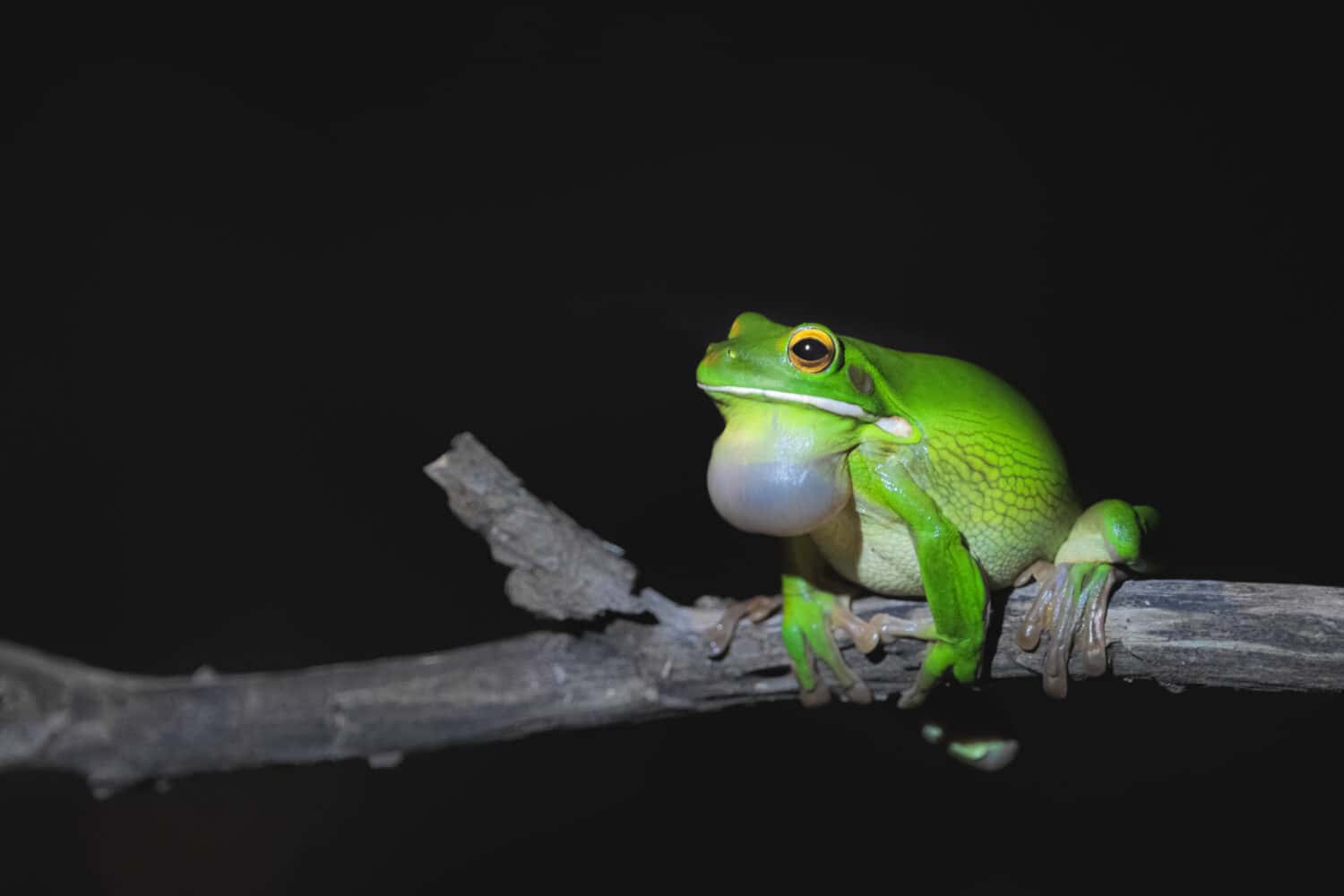
Male tree frog mating calls are usually called ‘ribbits.’
Image: Stephen Bridger, Shutterstock
©Stephen Bridger/Shutterstock.com
When a male tree frog wants to get the attention of a female tree frog, he makes a distinct call. These noises are commonly known as ‘ribbits,’ though each species makes a different sound. The call of a male red-eyed tree frog sounds more like a ‘chack’ than a ‘ribbit.’ The call of the green tree frog comes across as a ‘reek-reek’ sound.
5. Tree Frogs Actually Breathe with Their Skin
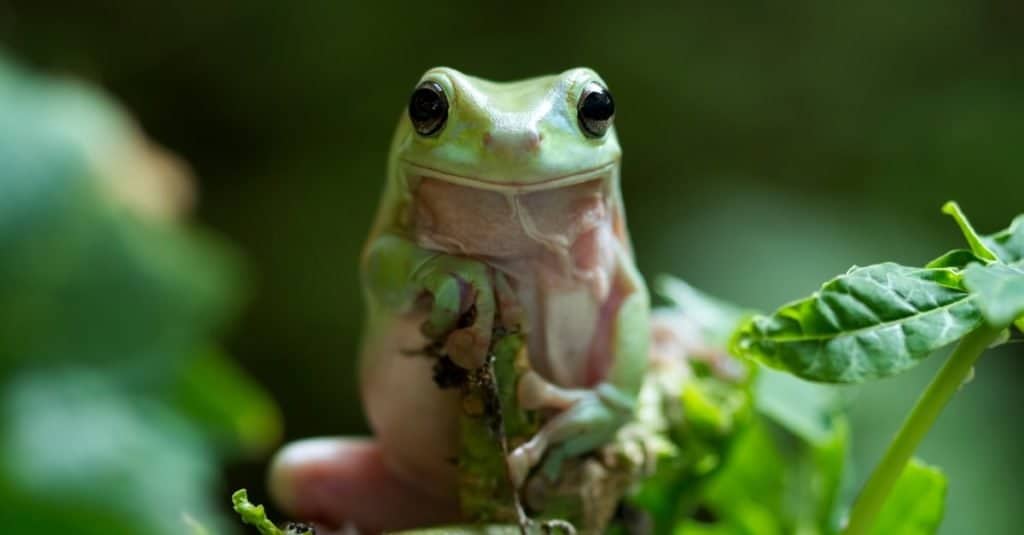
Because they respire through their skin, tree frogs are very sensitive to any kind of change in the air, like air pollution.
©Kurit afshen/Shutterstock.com
Unlike other creatures, like snakes, alligators, and lizards, tree frogs have several means of breathing. They can breathe through their nostrils, mouth, and skin. They do this by exchanging oxygen for carbon dioxide using the blood vessels and mucous membranes in their skin. Because of this, tree frogs are incredibly sensitive to climate pollution, and many are consequently threatened or even endangered.
6. Tree Frogs Can Predict Oncoming Rain

Male tree frogs croak before and after rain to attract a mate.
©Kurit afshen/Shutterstock.com
Over the years, people in Europe learned to listen to the European tree frog when it started croaking. The sound of croaking tree frogs means that rain is almost certainly on its way. But tree frogs don’t just croak before it rains; they croak after too. Scientists believe that male tree frogs croak around rainy periods because it’s an excellent time to attract a mate. Females are more likely to lay eggs in fresh pools of rainwater. Plus, rain and humidity make for happy frogs.
7. Red-Eyed Tree Frogs Don’t Have Eyelids
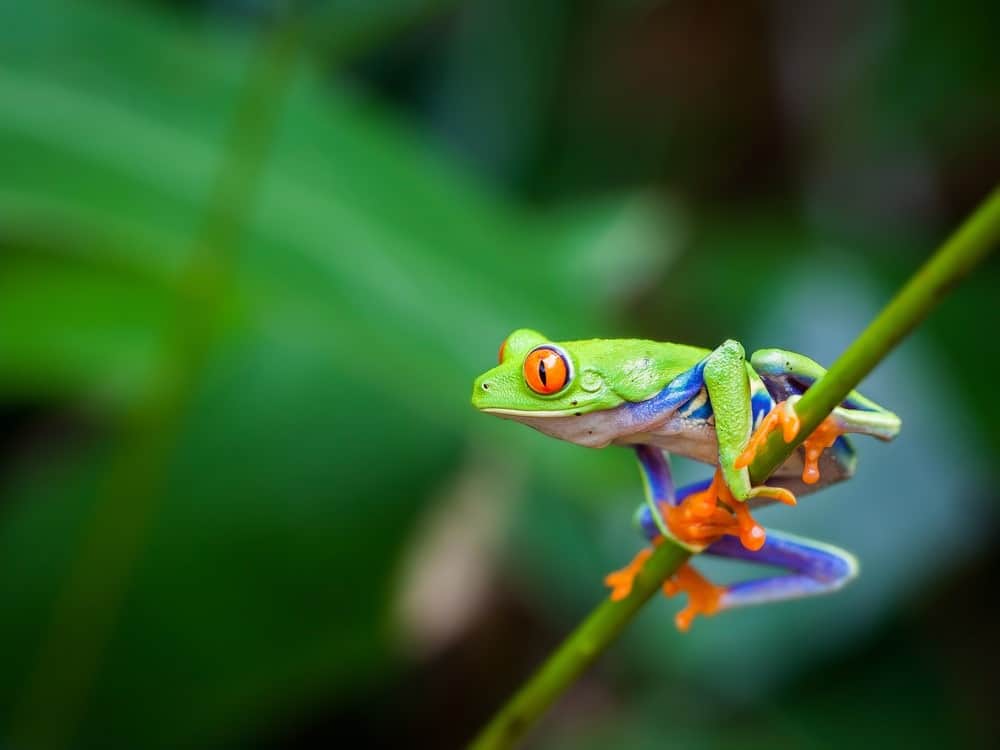
It’s true; tree frogs lack traditional mammalian eyelids.
©Dynamicfoto/Shutterstock.com
Instead of a true eyelid, like humans, camels, wolves, and sheep have, red-eyed tree frogs have something called a nictitating membrane. This membrane is semi-transparent and allows the red-eyed tree frog to keep an eye out for danger even when they’re sleeping. The nictitating membrane also keeps the eye moistened. And, when they’re swallowing a big meal, red-eyed tree frogs actually blink to help get it down.
8. Not All Tree Frogs Start as Tadpoles
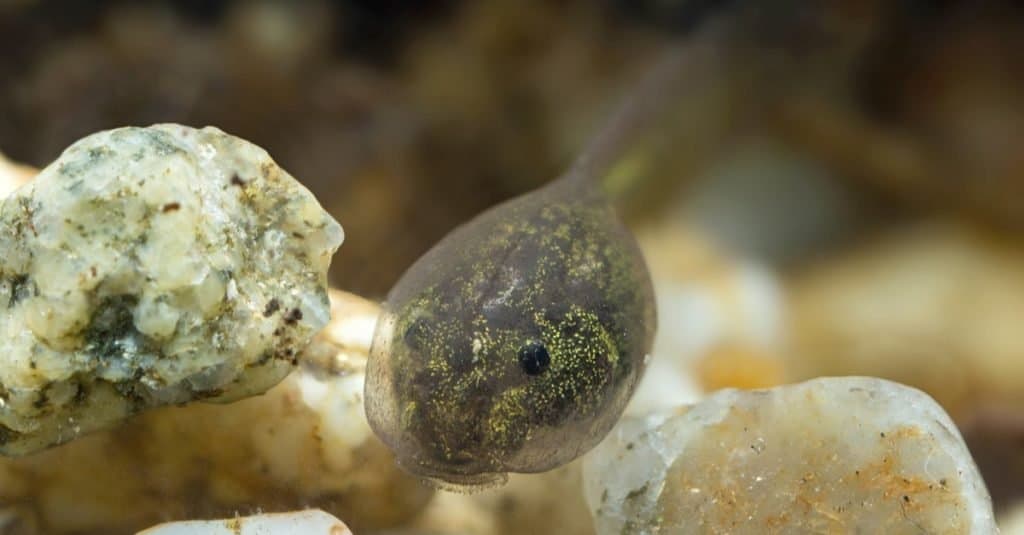
Most tree frogs emerge from the egg as a tadpole but some skip that phase to start life as tiny adults.
©Macrolife/Shutterstock.com
Some species of tree frogs actually skip the tadpole phase. Most amphibians, like goliath toads, bullfrogs, and terrestrial frogs, emerge from the egg as a tadpole. Tadpoles lack arms and legs and look like tiny heads with tails. As they develop, they grow limbs and eventually lose their tail. But, in species that skip this phase, infant tree frogs look just like the adults, only smaller.
9. Male Tree Frogs Fight for Territory
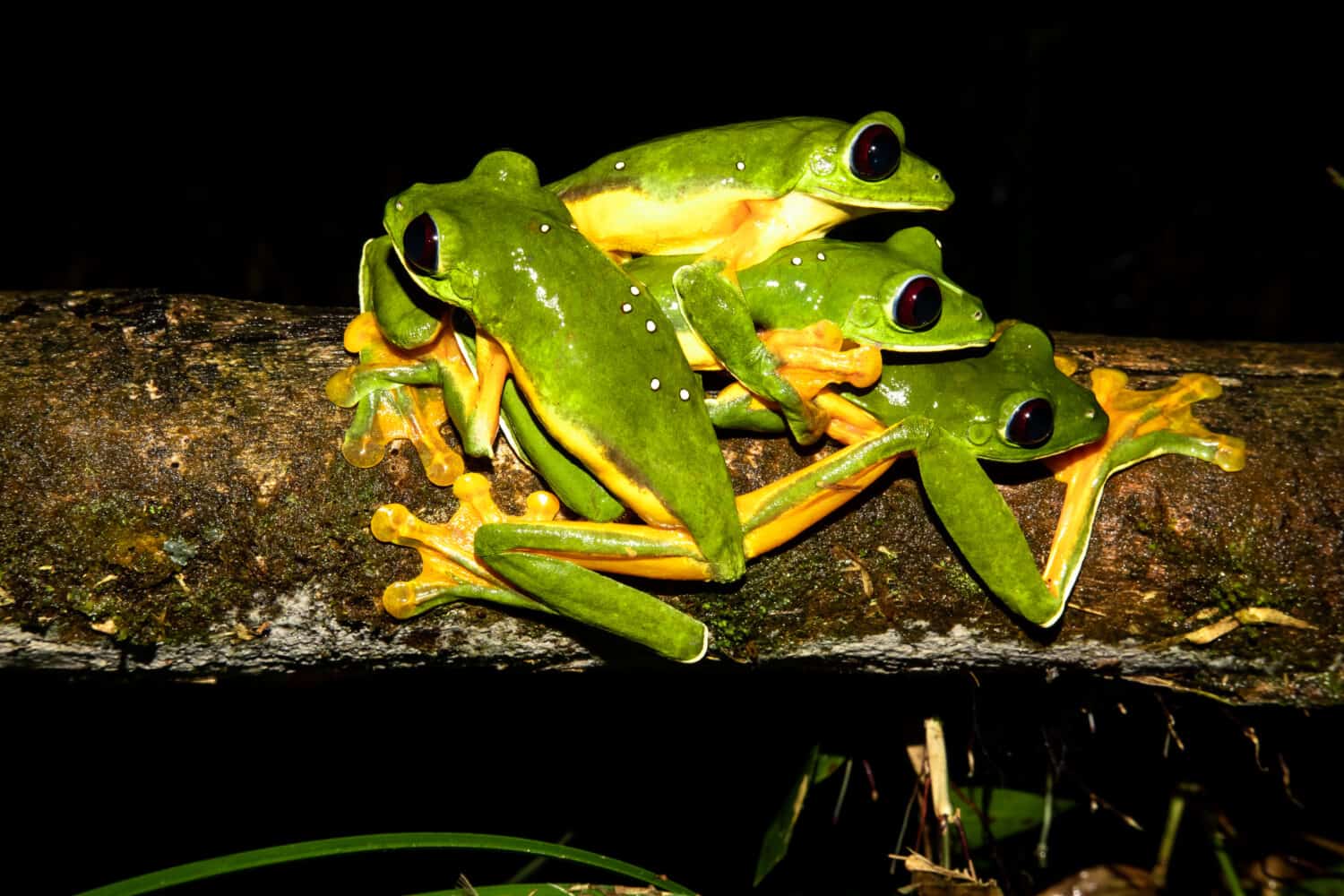
Male tree frogs will wrestle over territory and potential mates.
Image: Jeroen Mikkers, Shutterstock
©Jeroen Mikkers/Shutterstock.com
That’s right; even the adorable tree frog isn’t safe from territorial conflict. Males are highly territorial and will protect their piece of land, and any potential mates, with violence if necessary. Tree frogs are incredible hunters, and when they fight, they turn those skills on each other. Male tree frog fights may include wrestling, kicking, head-butting, and shoving.
10. Tree Frogs Have Vocal Sacs
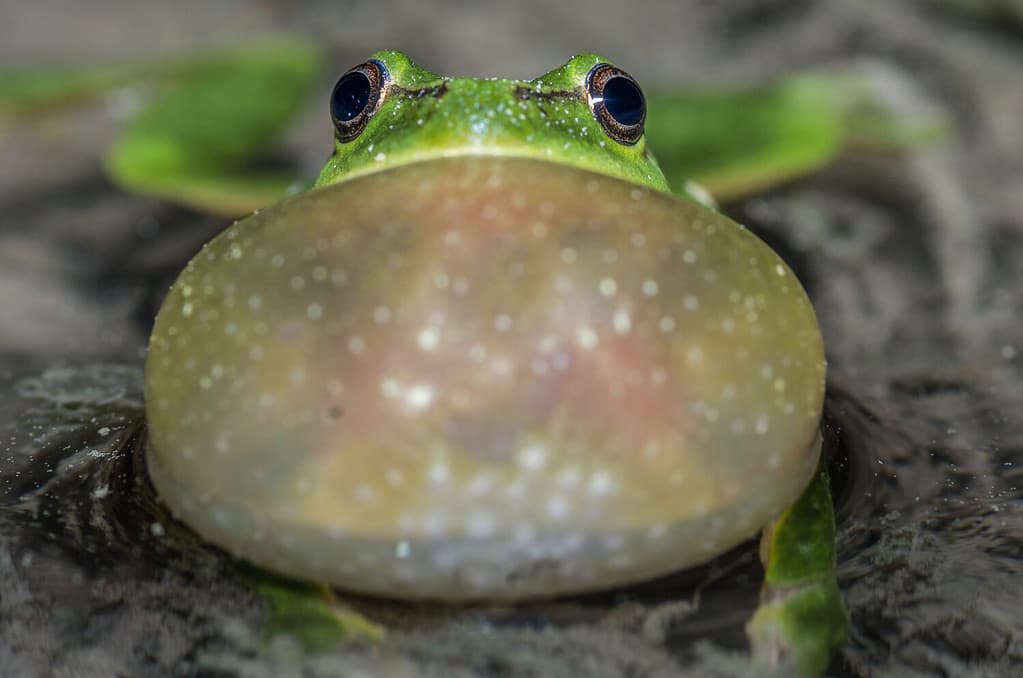
Tree frogs have vocal sacs that puff out when calling their mates.
©Dieter Herrmann/Shutterstock.com
Our final tree frog fact has to do with males calling their mates. When a tree frog bellows its call out to the world, something strange happens to its body. On its throat, which is generally white or pale, a semi-translucent sac puffs out. It can look like a second head or even a strange tumor. But it’s actually there to help the tree frog make its famous vocalizations.
The photo featured at the top of this post is © Vaclav Sebek/Shutterstock.com
Thank you for reading! Have some feedback for us? Contact the AZ Animals editorial team.







